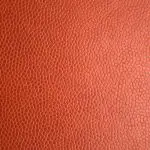Gore-Tex shoes don’t stretch much over time because their waterproof membrane is designed to keep its shape and durability rather than stretch. You might notice slight softening in the lining, but the membrane limits overall flexibility and expansion. If your shoes feel tight, gradual wear with thick socks can help ease comfort. Environmental factors and usage also affect fit, so knowing how Gore-Tex interacts with your foot and conditions can make a big difference. There’s more to understand about fit and care.
Table of Contents
Key Takeaways
- Gore-Tex membranes limit stretch due to their thin, layered waterproof structure prioritizing durability over flexibility.
- Upper materials and linings may compress slightly, but overall shoe dimensions change minimally over time.
- Walking and usage can cause selective stretching in non-Gore-Tex parts, slightly altering fit in targeted areas.
- Environmental factors like temperature and humidity can affect material flexibility but don’t cause significant long-term stretch.
- Gradual break-in and proper care help adjust fit, but persistent tightness may require resizing or choosing a different model.
Understanding Gore-Tex Material Properties
Gore-Tex material combines waterproof protection with breathability, making it popular in outdoor footwear. When you wear Gore-Tex shoes, you benefit from a membrane that blocks water from the outside while allowing moisture vapor from sweat to escape. This keeps your feet dry and comfortable in various weather conditions.
The membrane is thin, durable, and laminated between layers of fabric, which means it’s not designed to stretch much. You might notice some flexibility in the shoe’s outer fabric or sole, but the Gore-Tex layer itself remains stable.
Understanding this helps you realize why Gore-Tex shoes maintain their shape and fit over time, rather than stretching out considerably like some other materials might.
How Gore-Tex Affects Shoe Flexibility
Although you might expect outdoor shoes to be highly flexible, the presence of a waterproof membrane changes how they move.
Outdoor shoes may seem flexible, but waterproof membranes alter their movement and flexibility.
Gore-Tex adds durability and water resistance but impacts the shoe’s flexibility in subtle ways. When you wear Gore-Tex shoes, you’ll notice they don’t bend as freely as non-waterproof models.
This happens because:
- The membrane’s layered structure limits stretch to maintain a waterproof barrier.
- Gore-Tex requires a snug fit to prevent water intrusion, reducing material give.
- The membrane’s stiffness slightly restricts the shoe’s natural flex during walking or running.
You’ll still get some flexibility, but Gore-Tex shoes prioritize protection and durability over maximum pliability, so expect a firmer feel compared to non-waterproof footwear.
Factors Influencing Shoe Stretch and Fit
When you wear Gore-Tex shoes, the materials used play a big role in how much they stretch and fit.
How you walk and where you use them also affect their shape over time.
Plus, factors like temperature and moisture can change how the shoes conform to your feet.
Material Composition Impact
Because the materials used in making shoes directly affect how much they stretch, understanding their composition is key to predicting fit over time.
Gore-Tex shoes combine waterproof membranes with various outer materials, each contributing differently to stretchability and comfort. When you choose Gore-Tex shoes, consider these factors:
- Upper Material: Leather tends to stretch and mold to your foot, while synthetic fabrics offer less give but more stability.
- Membrane Integration: The Gore-Tex layer itself doesn’t stretch, so it limits overall elasticity and helps maintain shape.
- Lining and Padding: Soft linings can compress and adapt slightly, affecting feel but not greatly altering shoe dimensions.
Knowing these helps you pick Gore-Tex shoes that balance durability and comfort without unexpected stretching.
Wear Patterns Effect
Your unique wear patterns play an essential role in how Gore-Tex shoes stretch and fit over time. As you walk, run, or hike, different parts of the shoe experience varying pressure and friction, causing selective stretching. Understanding these wear points can help you predict how your shoes will conform to your feet.
| Wear Area | Effect on Fit | Common Outcome |
|---|---|---|
| Toe Box | Expands under pressure | More room for toes |
| Heel | Compresses with impact | Potential slip if loose |
| Arch | Stretches slightly | Improved comfort |
| Sides | Stretches with movement | Looser fit around midfoot |
| Tongue | Minimal stretch | Maintains snugness |
Environmental Factors Role
Although Gore-Tex shoes are designed for durability and water resistance, environmental factors like temperature, humidity, and terrain can greatly influence how they stretch and fit.
You might notice your shoes feel tighter or looser depending on the conditions you expose them to. Here’s how these factors play a role:
- Temperature: Heat can soften materials, causing your shoes to expand slightly, while cold tightens them up.
- Humidity: Moisture from rain or sweat can alter the Gore-Tex membrane’s flexibility, affecting fit.
- Terrain: Rough or uneven surfaces force your shoes to flex more, potentially stretching them in specific areas.
Comparing Gore-Tex Shoes to Leather and Fabric Shoes
When you compare Gore-Tex shoes to leather and fabric options, you’ll notice key differences in how they stretch and conform to your feet.
Leather naturally softens and molds to your foot shape over time, offering a personalized fit. Fabric shoes typically have a bit more give and can loosen slightly with wear.
Gore-Tex shoes, however, prioritize waterproofing and durability, which limits their stretch. The membrane inside Gore-Tex footwear resists moisture but also restricts flexibility, so these shoes maintain their shape longer and don’t stretch as much.
If you expect a break-in period for Gore-Tex shoes, it’ll be shorter and less about stretching and more about your foot adapting to the shoe’s firmness.
Understanding these differences helps you set realistic comfort expectations.
Tips for Breaking in Gore-Tex Footwear
To break in your Gore-Tex shoes, start by wearing them gradually to let the material adjust to your feet.
Use thick socks to cushion your feet and prevent friction during this period.
Also, manage moisture well by keeping your feet dry to maintain comfort and extend the shoe’s lifespan.
Gradual Wear Process
Since Gore-Tex shoes have a durable waterproof membrane, you’ll need to break them in gradually to secure comfort without damaging the material. Rushing the process can wear down the membrane or cause discomfort.
Instead, follow a steady approach to help your shoes conform to your feet naturally.
- Start by wearing your Gore-Tex shoes indoors for short periods to let the material flex gently.
- Increase wear time daily, focusing on light activities that allow the shoes to adapt without excessive strain.
- Pay attention to pressure points; if you notice discomfort, adjust lacing or add insoles to relieve stress.
This gradual wear process secures your Gore-Tex shoes stretch appropriately while preserving their waterproof integrity and overall durability.
Use Thick Socks
Wearing thick socks can make a big difference when breaking in your Gore-Tex shoes. They add cushioning, which reduces friction between your feet and the shoe’s interior, helping prevent blisters during the initial wear.
Thick socks also provide extra warmth, which can slightly soften the shoe material, allowing it to mold better to your foot shape. When you wear thick socks, your Gore-Tex shoes experience gentle stretching from the inside out, encouraging a more comfortable fit over time.
Just be careful not to choose socks that are too bulky, as that might make your shoes feel tight and uncomfortable, slowing the break-in process.
Moisture Management Tips
Managing moisture effectively plays an essential role when breaking in your Gore-Tex shoes.
Since Gore-Tex is designed to be waterproof yet breathable, controlling moisture inside the shoe prevents discomfort and promotes a better fit.
Here are three key moisture management tips to help you break in your Gore-Tex footwear:
- Wear moisture-wicking socks: Choose socks made of synthetic fibers or merino wool to keep sweat away from your skin and reduce dampness inside the shoe.
- Dry your shoes properly: After use, remove insoles and air out your shoes in a well-ventilated area to prevent moisture buildup and odor.
- Avoid waterproof sprays inside the shoe: They can clog the membrane, reducing breathability and causing moisture to accumulate.
Following these tips will make breaking in your Gore-Tex shoes more comfortable and effective.
Maintaining the Shape and Durability of Gore-Tex Shoes
Although Gore-Tex shoes are designed to be durable and water-resistant, you need to take specific steps to maintain their shape and longevity. Proper care prevents premature wear and keeps your shoes comfy.
Here’s a quick guide to maintaining your Gore-Tex shoes:
| Care Tip | Description |
|---|---|
| Clean Regularly | Remove dirt with a soft brush |
| Dry Properly | Air-dry away from direct heat |
| Use Shoe Trees | Preserve shape during storage |
| Apply Waterproof Spray | Reinforce water resistance |
Avoid soaking your shoes or using harsh detergents. When you store them, keep them in a cool, dry place. These habits help maintain the shoe’s structure and performance, so your Gore-Tex shoes stay effective and comfortable over time.
When to Consider Resizing or Different Models
If your Gore-Tex shoes feel tight or start causing discomfort despite proper care, it might be time to evaluate resizing or exploring different models.
Wearing shoes that don’t fit well can lead to pain or even injury, so knowing when to make a change is vital.
Here are three signs to take into account:
- Persistent Pressure Points: If certain areas pinch or rub consistently, resizing may help, or a model with a different last shape could be better.
- Foot Shape Changes: If your foot size or shape has changed due to weight gain, pregnancy, or other factors, resizing or switching models is wise.
- Activity-Specific Needs: Different Gore-Tex shoes suit hiking, running, or casual wear—choose a model that matches your primary use for ideal comfort and performance.
Frequently Asked Questions
Are Gore-Tex Shoes Waterproof in Heavy Rain?
You can count on Gore-Tex shoes to keep your feet dry in heavy rain. They use a breathable, waterproof membrane that blocks water while letting moisture escape, so you stay comfortable even in wet conditions.
Can Gore-Tex Shoes Be Machine Washed?
You shouldn’t machine wash Gore-Tex shoes because it can damage the waterproof membrane. Instead, gently clean them with a soft brush and mild soap, then air dry to keep them in good condition.
Do Gore-Tex Shoes Provide Good Insulation in Cold Weather?
You’ll find Gore-Tex shoes offer decent insulation in cold weather because they block wind and moisture. However, they’re not heavily insulated, so you might want to pair them with warm socks for extra cold conditions.
How Do Gore-Tex Shoes Perform in Hot and Dry Conditions?
You’ll find Gore-Tex shoes breathable and moisture-wicking in hot, dry conditions, keeping your feet dry from sweat. However, they might feel less ventilated compared to mesh shoes, so expect slightly warmer feet during intense heat.
Are Gore-Tex Shoes Suitable for Hiking on Rocky Terrain?
You’ll find Gore-Tex shoes great for hiking on rocky terrain because they provide waterproof protection and breathability. Their durable construction offers good support and grip, helping you stay comfortable and safe on uneven, rugged surfaces.
- Does Chiffon Fabric Stink - July 15, 2025
- Does Chiffon Fabric Affect the Economy - July 15, 2025
- Does Cotton Fabric Have a Nap - July 15, 2025



![Best Moisture-Wicking Socks for [Running/Hiking/Everyday]: Stop Sweaty Feet sweat free foot comfort](https://knowingfabric.com/wp-content/uploads/2025/06/sweat_free_foot_comfort_a2jxe-150x150.jpg)


